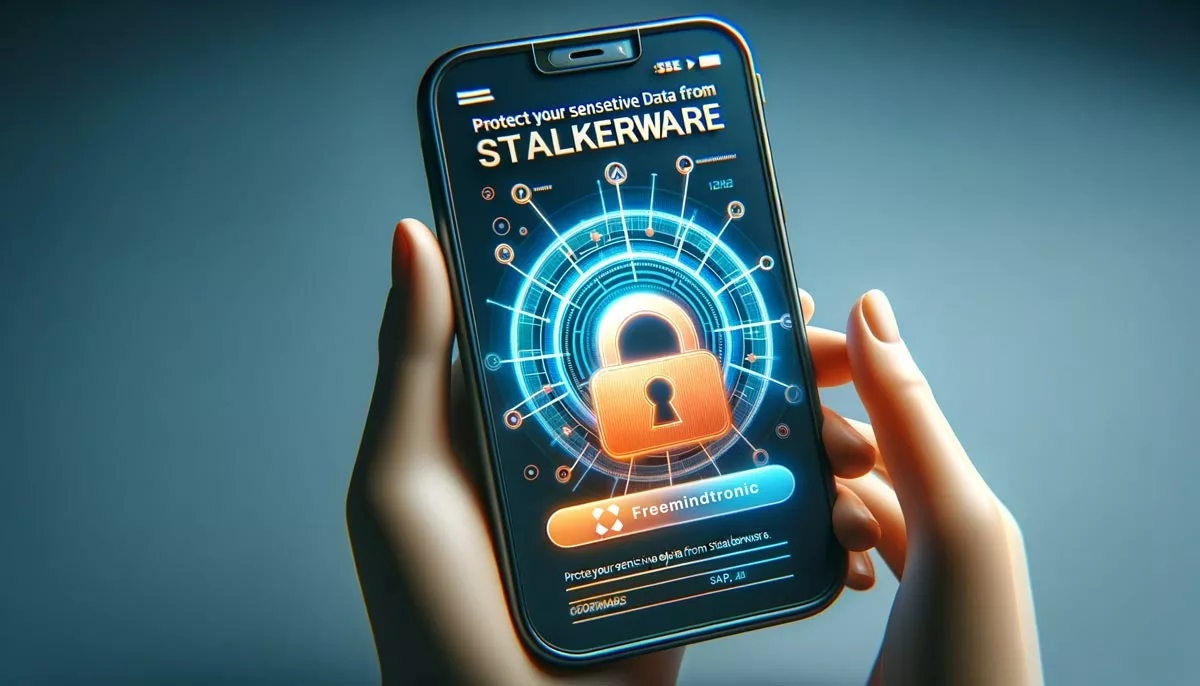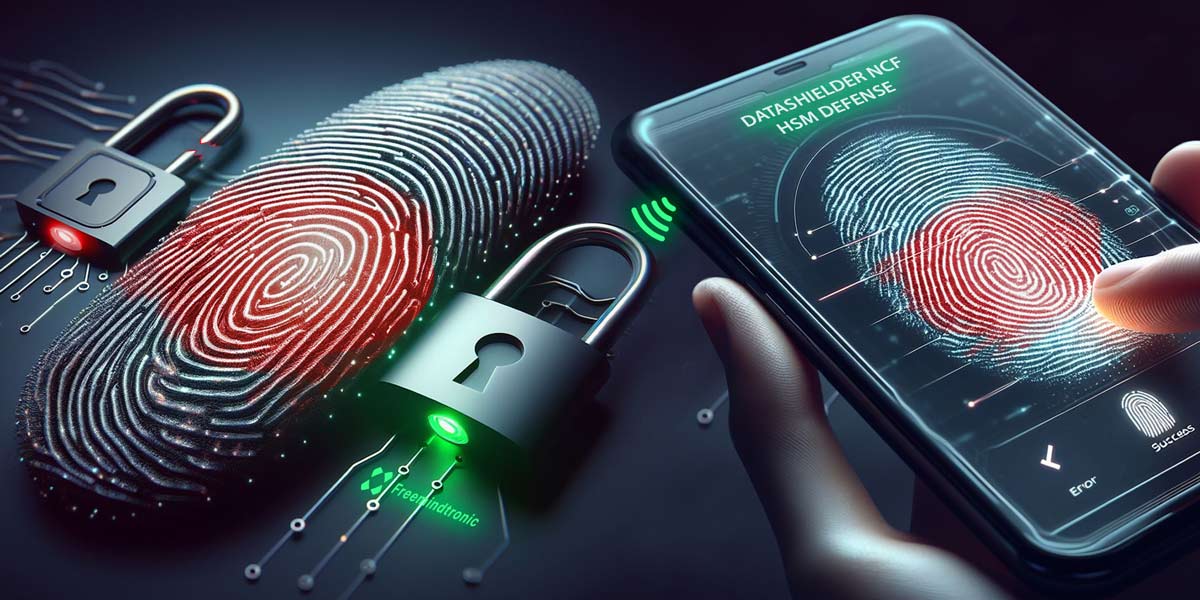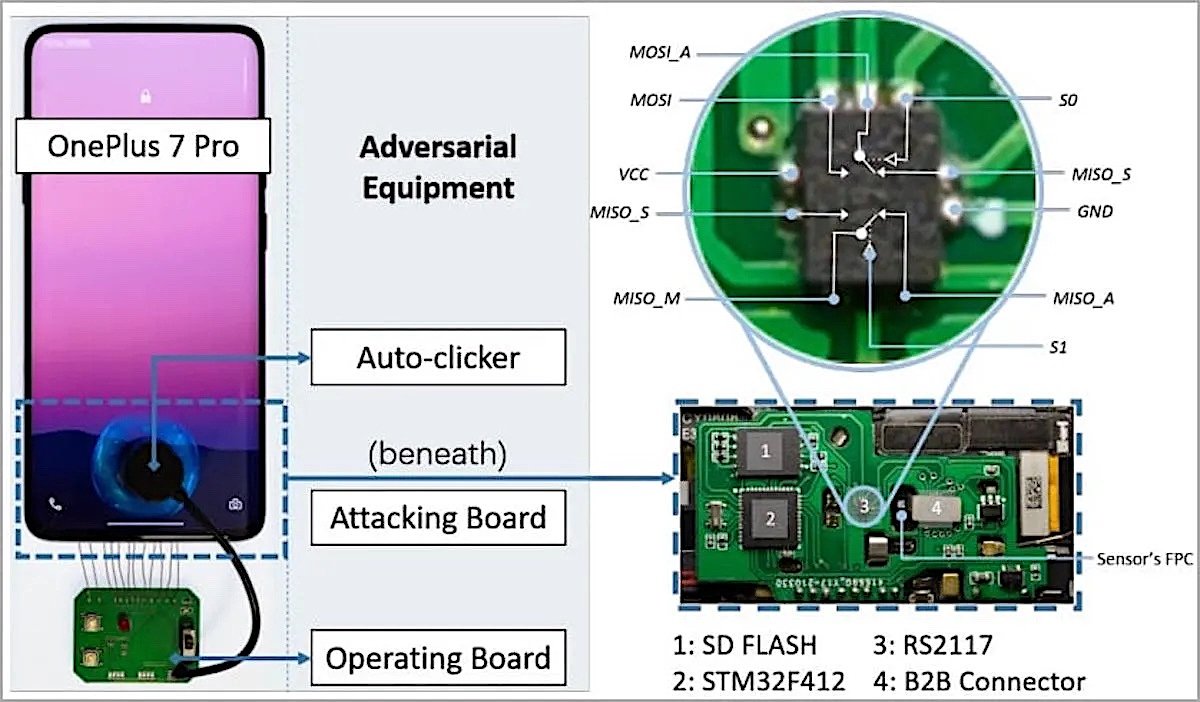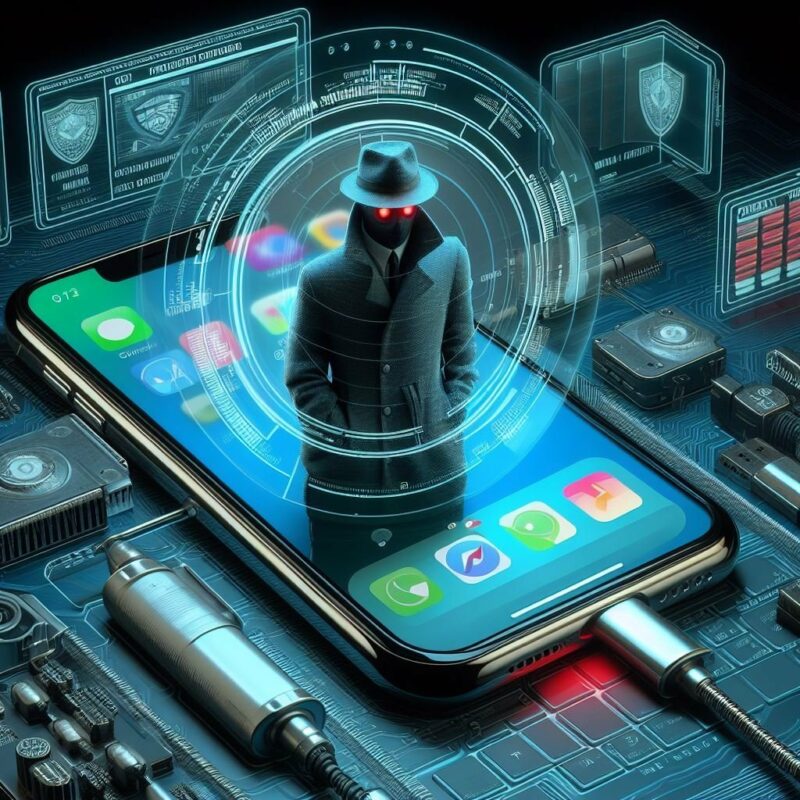Pegasus Spyware Protection by Jacques Gascuel: This article will be updated with any new information on the topic.
Pegasus spyware protection
Pegasus is a spyware that can hack your phone and spy on your confidential information. It has been used to attack sensitive people like journalists or politicians. Freemindtronic, an Andorran company specialized in NFC security, anti-spy and counter-espionage, offers you EviCypher NFC HSM, a device that allows you to store and manage your keys and secrets securely. With EviCypher NFC HSM, you can encrypt and decrypt your data, sign and verify your documents, authenticate and control your access, without fear of Pegasus or any other spyware accessing your data.
2025 Digital Security
December 2, 2025
2025 Digital Security
November 29, 2025
2025 Digital Security
November 29, 2025
2025 CyptPeer Digital Security EviLink
November 28, 2025
2025 Cyberculture Cybersecurity Digital Security EviLink
November 14, 2025
2026 Awards Cyberculture Digital Security Distinction Excellence EviOTP NFC HSM Technology EviPass EviPass NFC HSM technology EviPass Technology finalists PassCypher PassCypher
November 3, 2025
2025 Digital Security
October 23, 2025
2025 Digital Security
October 22, 2025
How to protect yourself from Pegasus spyware with EviCypher NFC HSM
Pegasus Spyware: what it is, how it works, and how to protect yourself with EviCypher NFC HSM. In this article, we will tell you about Pegasus spyware. A global investigation revealed its misuse by governments and intelligence agencies. They target and spy on personalities around the world. We will explain what Pegasus is, how it works, who developed and sold it, and how it violated human rights, free speech, and democracy. We will also give you tips to protect yourself from this malware with EviCypher NFC HSM technology. It uses a contactless hardware security module (NFC HSM). That is, an innovative security device that lets you encrypt your data and communications on your mobile phone with your own keys that you created and stored offline.
What is Pegasus spyware and how does it work?
The features and capabilities of Pegasus spyware
Pegasus spyware is a malware that can hack your phone and access your data, calls, location, camera, and microphone. It can use security flaws in Android and iOS: silent installation. Spyware activation: missed call or hidden message.
Once installed on a phone, Pegasus spyware gains full access to SMS messages, emails, photos, contacts, calendar, GPS data, logs, and any apps and data the phone contains. In fact, the spyware can even gain access to encrypted data and messages by intercepting them prior to the encryption process. Pegasus spyware can transmit all this information to a remote server controlled by the attacker. Pegasus spyware can also self-destruct or hide its traces if it detects any attempt to detect or remove it.
The developer and seller of Pegasus spyware
NSO Group, an Israeli company founded in 2010 by ex-members of Unit 8200, develops Pegasus spyware. The Israeli military’s cyber intelligence unit. NSO Group sells its product only to government and law enforcement agencies: rescue and crime-fighting purposes. However, accusations against NSO Group: spyware sales to authoritarian regimes and human rights abusers.
How Pegasus spyware has been used to target and spy on people around the world
The Pegasus Project: a global investigation into Pegasus spyware
July 2021: seventeen media outlets exposed Pegasus spying on leaders, activists, journalists and dissidents, leading to “global human rights violations.
The Pegasus Project was led by Forbidden Stories, a Paris-based nonprofit journalism organization, and Amnesty International’s Security Lab, which analyzed the phones of the victims. They revealed that NSO Group’s clients selected over 50,000 phone numbers for surveillance since 2016.
The high-profile targets of Pegasus spyware
NSO Group’s clients selected phone numbers of three presidents (Macron, Ramaphosa and Salih), 10 prime ministers (Khan, Madbouly, El Othmani, Modi, Orbán, bin Daghr, Hariri, Bedoui, Sagintayev and Michel) and one king (Mohammed VI).
The investigation also found at least 180 journalists from 20 countries targeted by Pegasus spyware. They included reporters from CNN , NYT , WSJ , Guardian , Al Jazeera , Le Monde , FT , WP , Reuters , Bloomberg , AP.
Furthermore , the investigation showed evidence of Pegasus spyware infections or attempts on at least 37 phones of journalists , activists , and executives from 10 countries. They were from India , Mexico , France , Morocco , Hungary , Azerbaijan , Bahrain , Saudi Arabia , UAE , and Rwanda.
Some of the other countries and people that have been reportedly targeted by Pegasus spyware are:
- Azerbaijan: to spy on opposition politicians such as Ali Karimli and journalists such as Khadija Ismayilova in 2019
- Bahrain: to spy on activists such as Nabeel Rajab and Moosa Abd-Ali Ali in 2020
- Hungary: to spy on journalists such as Szabolcs Panyi and politicians such as Bernadett Szél in 2019
- Kazakhstan: to spy on journalists such as Aigul Utepova and activists such as Serikzhan Bilash in 2020
- UAE: to spy on Princess Latifa, the daughter of Dubai’s ruler who tried to escape in 2018
- USA: to spy on Jeff Bezos, the founder and CEO of Amazon, who had his phone hacked by Pegasus spyware in 2018 after he received a WhatsApp message from Mohammed bin Salman, the crown prince of Saudi Arabia
These cases show that Pegasus spyware has been used to violate human rights, free speech, and democracy around the world. The victims of Pegasus spyware have faced harassment, intimidation, arrest, torture, or assassination because of their work or opinions.
The latest news on Pegasus and its consequences
Since we published our article, there have been several important developments regarding Pegasus and its impact on the security and privacy of mobile phone users. Here is a summary of the latest news on Pegasus, sorted by descending chronological order:
Algeria launches an investigation into allegations related to Pegasus spyware
On July 21, 2023, Hindustan Times reported that Algeria had launched an investigation into allegations related to Pegasus spyware. The Algerian attorney general announced that he would open an investigation into the allegations that Pegasus spyware had been used to spy on Algerian personalities, including President Abdelmadjid Tebboune and Army Chief of Staff Saïd Chengriha. According to an investigation conducted by the Forbidden Stories consortium and Amnesty International, and published by several international media outlets, Algeria was among the 50 countries whose phone numbers had been selected as potential targets by NSO Group’s clients, who are mainly governments and intelligence agencies. The investigation revealed that more than 600 Algerian personalities had been targeted by Pegasus between 2017 and 2021, including ministers, diplomats, journalists, activists, political opponents and civil society members. The investigation also suggested that Morocco was the main user of Pegasus in North Africa, and that it had spied on its Algerian neighbors for geopolitical and security reasons. The Algerian attorney general said that he would conduct a “thorough and serious” investigation into this matter, and that he would cooperate with the judicial authorities of the countries concerned. He also said that Algeria condemned “firmly” any violation of its national sovereignty and the privacy of its citizens.
This case shows that Pegasus poses a threat to the sovereignty and security of African countries, which are often victims of foreign interference. It also shows that Algeria takes seriously the protection of its citizens from illegal spying. We applaud the initiative of the Algerian attorney general to open an investigation on this subject.
The Spanish investigation into Pegasus spyware is closed due to “total lack of cooperation” from Israel
On July 10, 2023, The Times of Israel revealed that the Spanish investigation into Pegasus spyware had been closed due to “total lack of cooperation” from Israel. A Spanish judge was investigating the alleged hacking of phones of Spanish ministers with Pegasus spyware, made by the Israeli company NSO Group. The judge had asked four times the Israeli government to provide him with information on the software and to allow him to interrogate NSO Group’s CEO, but he never received a response. The judge therefore decided to close provisionally the case, citing the “total lack of cooperation” from Israel, which prevented the investigation from progressing. The judge indicated that the only possible recourse was diplomatic pressure, to urge Israel to respect its obligations under international treaties.
This case shows that Pegasus raises a legal and ethical problem, which requires international cooperation to enforce law and justice. It also shows that Israel displays a lack of transparency and accountability on its activities related to Pegasus spyware. We regret Israel’s attitude, which hinders the Spanish investigation and which does not respect its international commitments.
The FBI used Pegasus spyware to spy on iPhones, in violation of the US ban
On August 1st, 2023, Mac4Ever revealed that the FBI had used Pegasus spyware to spy on iPhones, in violation of the ban imposed by the US government in November 2021. According to the information published by The New York Times and The Guardian, the FBI had acquired Pegasus spyware in 2019, under Trump’s administration, for 9 million dollars. The bureau had tried to access data from some iPhones, including those of US officials in Uganda, without their consent or knowledge. The FBI had also used another product from NSO Group, Landmark, which allows locating phones through flaws in cellular networks. This product had been used by a subcontractor of the FBI to track drug traffickers in Mexico, without informing the FBI of the origin of the product. The FBI had terminated the contract with the subcontractor and opened an internal investigation into this matter.
This case shows that Pegasus represents a danger for the privacy and human rights of mobile phone users, including in the US. It also shows that the FBI acted in contradiction with US foreign policy and national security, which placed NSO Group on a blacklist in November 2021. It finally shows that the FBI was deceived by a subcontractor who provided it with an illegal and insecure product. We denounce the use of Pegasus spyware by the FBI and we demand an independent investigation into this case.
By summarizing the latest news on Pegasus and its consequences, we show that the threat is still present and that it is urgent to protect yourself from this spyware with Evicypher NFC HSM.
How to detect and remove Pegasus spyware?
Pegasus is a malicious software that can hack your phone and access your data, calls, location, camera and microphone. It can use security flaws in Android and iOS to install silently and activate by a missed call or a hidden message.
If you suspect that you have Pegasus spyware on your phone, you can use a tool called MVT (Mobile Verification Toolkit) to scan your phone and check for traces of infection. MVT is a free tool developed by Amnesty International’s Security Lab. It works for both iOS and Android phones, but it requires some technical skills and a computer to run it.
To use MVT, you need to follow these steps:
- Back up your phone to a computer using iTunes (for iOS) or ADB (for Android)
- Download and install MVT on your computer using Python
- Download the Indicators of Compromise (IOC) file from Amnesty International’s GitHub repository
- Run MVT on your computer and point it to the backup of your phone and the IOC file
- Read the analysis report and look for signs of infection
- If MVT finds evidence of Pegasus spyware on your phone, you should take immediate action to remove it and protect yourself. Here are some recommendations:
- Erase your phone and restore it to factory settings
- Change all your passwords and enable two-factor authentication
- Contact a trusted expert or organization for further assistance
- Report the incident to the authorities or the media
You can find more detailed instructions on how to use MVT and what to do if you are infected on Amnesty International’s website or on The Verge’s guide. You can also use iMazing’s spyware detection tool for iOS devices, which is easier to use than MVT but less comprehensive.
Pegasus is a serious threat to your privacy and security. You should be aware of the risks and take precautions to protect yourself. EviCypher NFC HSM is a powerful solution that can help you encrypt your data and your communications on your mobile phone with your own keys. You can also use MVT or iMazing’s tool to detect and remove Pegasus spyware if you think you are infected. Stay safe and vigilant!
How EviCypher NFC HSM can protect you from Pegasus spyware
EviCypher NFC HSM: features and capabilities
EviCypher NFC HSM Technology: encryption via a Contactless Hardware Security Module (NFC HSM) designed and manufactured by Freemindtronic, an Andorrane R&D company in cyber, safety, security and anti spy.
EviCypher NFC HSM: store your keys and secrets in a contactless NFC device, like a card, sticker, or keychain. The Android phone’s NFC signal powers the device and serves as the terminal and UI. The device can store up to 200 secrets in its EEPROM memory.
The device: patented wireless access control system for two access profiles: administrator and users. Share your secrets without compromising your privacy. Patented authentication system by segmented key for up to 9 trust criteria to encrypt your secrets, such as geolocation, BSSID, password, or fingerprint.
Evicypher NFC HSM: Use your secrets without constraint with different Android NFC phone and all types of computers via extensions for web browser and web courier and open source Thunderbird. Share your secrets safely and with confidence offline and in Gap air. That is to say physically isolated from networks. In addition, you can share your secrets proximity by Bluetooth ADHOC or via a simple QR code encrypted in RSA 4096. You can thus encrypt or oversee all your favorite email types from your NFC HSM. It is contactless encryption between human being, without leaving any traces of your secrets in your phones or computers.
Products and services based on EviCypher NFC HSM technology
EviCypher NFC HSM: based on EviCore NFC HSM Technology, one of Freemindtronic’s white label products and services with patented technologies. Only available under patent license for white label products integration.
Evicypher NFC HSM: double-use version for civil and defense purposes , with reinforced security for your secrets , using more hidden and/or shared trust criteria , unknown to the user , preventing physical or legal threats from obtaining them . This version: for sovereign entities , like armed forces or secret services , needing more protection against espionage threats like PEGASUS spy software.
How to get and use EviCypher NFC HSM
Anonymously, with Freemindtronic Install on your NFC Android phone, create and store your secrets in an NFC HSM. Define your access profiles and trust criteria for each secret. Use your unlimited secrets with different NFC Android phones. Use your usual communications without changing your habits, email, webmail, chat, SMS, instant messaging, to encrypt them without contact just by passing the NFC HSM from Freemindtronic under the NFC antenna of your phone. Share your secrets with others who also have NFC HSM compatible with EviCypher NFC HSM technology.
To use EviCypher NFC HSM: Android phone with NFC and Freemindtronic app [here]. NFC device compatible with EviCore NFC HSM technology, such as Datashielder product with EviCypher NFC HSM and EviPass NFC HSM technologies. You will have the choice of different models and designs manufactured by Freemindtroic the Freemindtronic website click [here] to find out more.
EviCypher NFC HSM is a technology that allows you to fight against Pegasus spyware by securing your keys and secrets with hardware encryption and NFC. With EviCypher NFC HSM, you benefit from an innovative, practical and flexible solution for your personal or professional needs.
If you are interested in obtaining Evicypher NFC HSM technology and using it for your personal or professional needs, you can contact Freemindtronic by clicking [here]. You can also consult on the site how Evicypher NFC HSM technology works by clicking [here].
Conclusion and recommendations
Pegasus spyware: a privacy and human rights threat needing urgent action and regulation. Amnesty International calls for a global moratorium on surveillance technology sales and use until a human rights-compliant framework exists.
Evicypher NFC HSM: A technology to help you protect yourself from spyware like Pegasus with contactless encryption from a NFC HSM device without ever keeping clear data in the phone and/or computer with the possibility of deciphering the encrypted messages in AES256 Post quantum in GPA air via an QR code encrypted in RSA-4096 from the NFC HSM. Freemindtronic, a research and development company of safety, security, cyber security and andorran spying solution, which develops and offers various NFC HSM format and services available under white brand license with patented technologies.
Evicypher NFC HSM: Use your secrets without constraint with various NFC Android phones and all types of computers via extensions for web browser and web mail and Thunderbird source. Share your secrets safely and with confidence offline and in Gap Air. That is to say physically isolated from networks. In addition, you can share your secrets by Bluetooth Adhoc proximity or via a simple QR code encrypted in RSA 4096. You can quantify in seconds all your texts and parts attached for all your favorite messaging from your NFC HSM. It is contactless encryption between humans, without leaving traces of your secrets in your phones or computers.




























